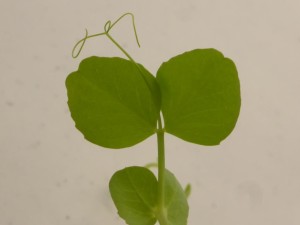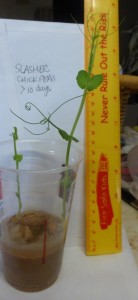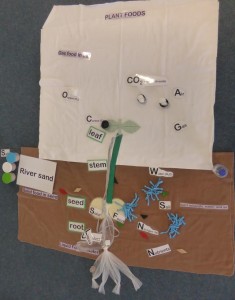‘Farming Pulses’ is the third in a series of 4 sessions for the Wimmera 2016 International Year of Pulses Education Project, going to 150 primary children in 7 schools, so we have had 150 mini-farms of 10 pulse seeds each being grown for this August National Science Week session.
 Have you watched a seed sprout and seedlings grow? The third session of “Pulsing into Pulses’ is about the first 28 days of a seeds life, when there are so many changes they grow through. By planting seeds at three levels in the mini-farm containers, and with each child, being responsible for one set of seeds, hopefully many will see (and record) :
Have you watched a seed sprout and seedlings grow? The third session of “Pulsing into Pulses’ is about the first 28 days of a seeds life, when there are so many changes they grow through. By planting seeds at three levels in the mini-farm containers, and with each child, being responsible for one set of seeds, hopefully many will see (and record) :
when the seed coat is broken
when the first white shoot comes out and heads down into the soil
when the first green shoot comes out and heads up
and then develops leaves and what their shape will be.
 Three seeds types are being used: lentils, chick peas, and field peas. These are repeated between the 9 classes, so that results can be compared. How well do they grow? The children have made hypotheses about:
Three seeds types are being used: lentils, chick peas, and field peas. These are repeated between the 9 classes, so that results can be compared. How well do they grow? The children have made hypotheses about:
colour (green),
shapes (plants with roots, stems and leaves)
and size (varying from 5-20 cm).
Hypotheses help us recognise what we thought we knew before experimenting (28 days ago) and see what we now discover to add to, or change, that Agricultural Science knowledge.
This session will also discuss emotional responses to this experiment, under four responses, which could contribute to ‘igniting the imagination’ in Science by the questions that follow:
amazing
surprising
puzzling
upsetting
This experiment has additional layers as a blind experiment into the effects of 3 different soils, and a simulation of farming,
 Expecting that the main responses above will involve questions which will need some understanding of how plants get the ‘food’ they need to grow, this will be session 3 model.
Expecting that the main responses above will involve questions which will need some understanding of how plants get the ‘food’ they need to grow, this will be session 3 model.
1 ‘food’ sources for the developing plant:
seeds have food stored inside them to begin their growth;
a white root shoots downward to get liquid food (nutrients) from soil;
a green sprout shoots upwards to take carbon gas from the air (CO2) for photosynthesis, from which the carbon will build more of the plant.
2 what the pulses do for us:
while growing, leaves return oxygen gas to the air for us to breathe;
at the end of its life, seeds can be harvested for food;
and after its life, pulse roots provide nitrogen to feed the soil.
There are five ways in which this is a simulation of farming experience as a practical science: Farmers:
1 know and apply a lot of science to grow crops (all tubs and the growing of seedlings);
2 but face unpredicted things (blue tubs eg. new land, hidden salt, weather events); and 3 adopt new knowledge from science that has been tested repeatedly before its general use (white tubs);
so 4 there is an emotional aspect to farming, especially when crops fail, despite the science and efforts, and
5 Farmers replant, with increased science knowledge from the failure or success. (All whose seeds had failed, received new seedlings to grow out a full plant.)
page set up 17 August 2016
